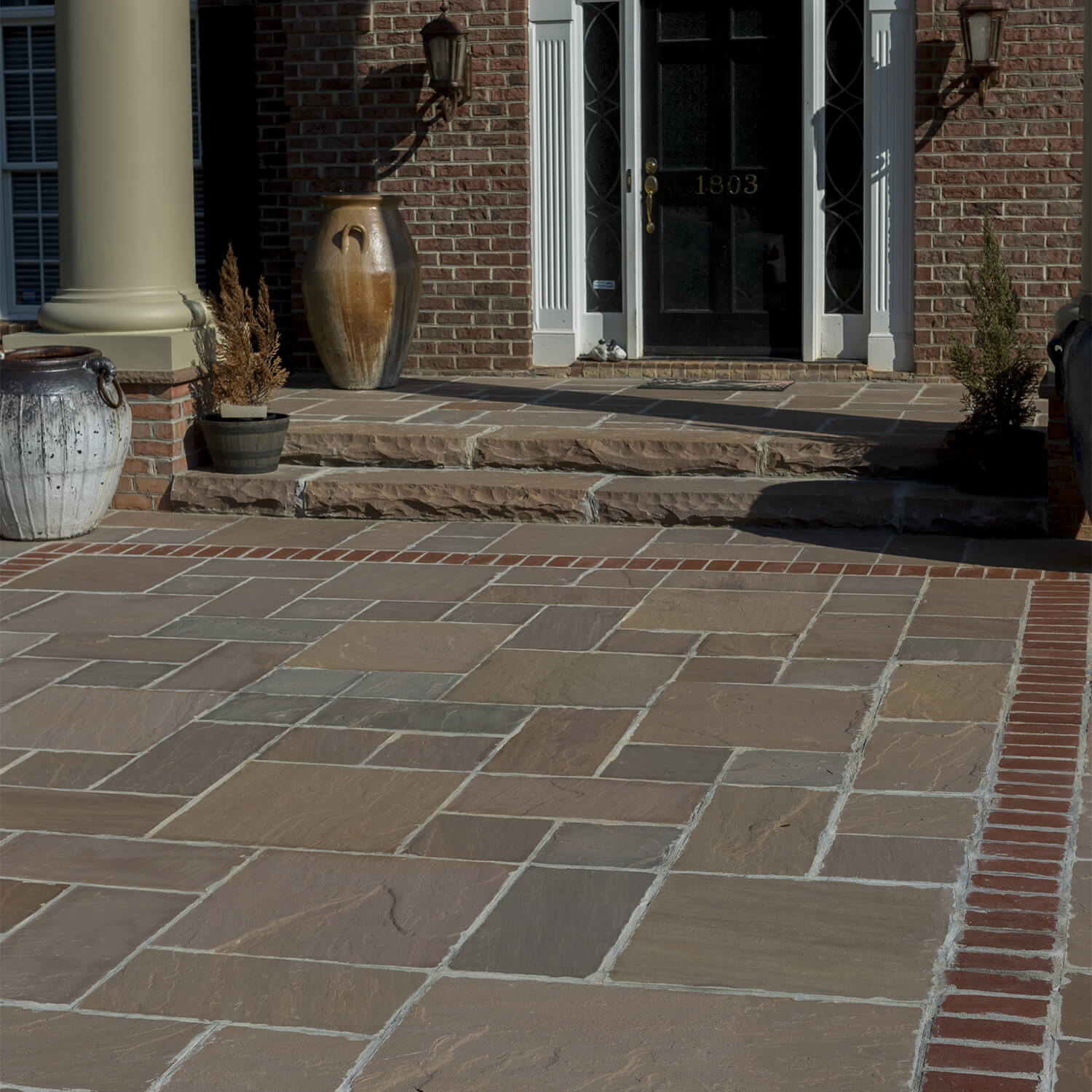Indian sandstone has a versatility and natural beauty that has made it an extremely popular choice for gardens, outdoor pool surrounds and driveways.
It has an inherent rough texture which makes it naturally slip-resistant, however there are instances where it can be slippery especially when it is wet.
Sandstone comes in many finishes, a rougher hewn look that weathers beautifully as it ages and looks great for period or more classical-looking properties but many people also love the contemporary look of honed or sawn sandstone, which is machine cut and shaped to a smooth finish.
It’s the most modern look offered by this kind of stone, comes in a variety of colours and can be used in most outdoor situations, especially patios and driveways that are covered and not so open to the elements.
Honed tile is perfectly flat and smooth and that is where some problems with the surface can arise.
Sandstone naturally has quite a lot of traction but because sawn sandstone is a more flat, smooth surface it can be a particularly dangerous slipping hazard, especially in areas where there is water, like a swimming pool.
How can I treat my sandstone to stop it from becoming slippery?
-
Coat the surface
You can buy on the counter coatings designed to cover flat surfaces and give them a non-slip layer however, some experts believe this can be unsatisfactory in the long run because the coating is eventually likely to crack, causing you even more problems.
-
Spread a layer of sand
Use sand to fill in the areas between, around, and leading up to the pavers.
The sand will continually be tracked onto the pavers as people walk on them.
You can combine fine silica sand or anti-slip additive with a high-quality stone sealer that will penetrate the natural stone.
Paint on one thin coat of sealer and immediately sprinkle the sand overtop.
Let it dry for 24 hours and cover with another coat of sealer.
Try a test step before doing the rest, to make sure the sand renders the surface gritty enough.
-
Power wash
If a build-up of moss or algae is what makes your pavers slippery when wet they give them a pressure wash.
Drainage problems can increase the slippiness so if the area has poor drainage, this may not work well.
You can also use a stiff brush and scrub off the growth.
Choose the kind of cleaner that states it helps to control moss growth, or use a natural cleaner, such as one made from seaweed, if plants are growing nearby.
Prune nearby trees to increase sunlight and inhibit future growth.
-
Sandblast the surface
Sandblasting sandstone paving slabs can offer good anti-slip properties.
A sandblasted surface is created by the abrasive blasting of the surface using sand.
The sand is propelled against the surface which roughens the texture all over, at a uniform level.
Get in touch
For more information about sandstone and its uses contact The Premium Paving Company on 0800 689 5236 or email to info@premiumpavingco.com.








